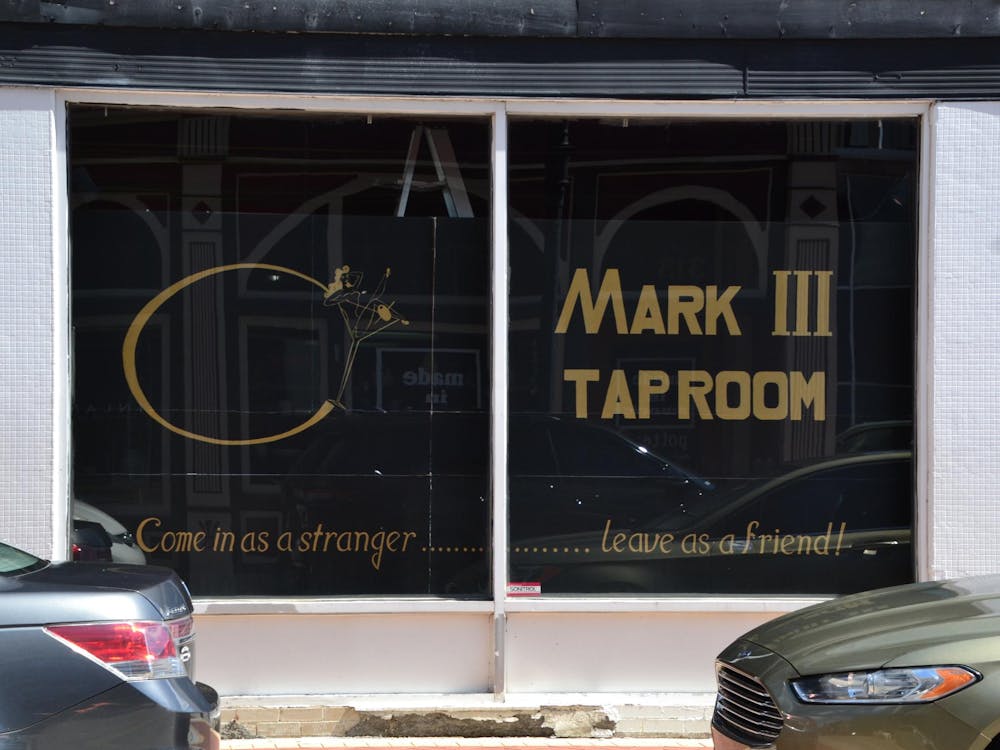Scanning, creating descriptions and filling out accompanying information all happen beneath the spiral staircase in Bracken Library where digital librarians spend their work week digitizing history.
The goal, head of Metadata and Digital Initiatives Jim Bradley said, is to provide the public with free access to history through the Digital Media Repository.
“I’m glad we have the opportunity to do this because a lot of things are just sitting in boxes or shelves up there, that people may not realize are there, and as we’re able to push out these materials into more usable outlets, they’ll be discovered more often,” Bradley said.
Digital librarians also strive to extend the value of the history Ball State has, Dean of University Libraries Matthew Shaw said.
“Digital initiatives expand the value of our unique archival collections beyond the physical campus and support researchers around the world with access to primary source materials,” Shaw said in an email.
THE MILESTONE
The Digital Media Repository reached its millionth item on Jan. 18. The process took 12 years, but since the end of March, the DMR accumulated 1,016,454 materials and 273 online collections, something Bradley credits to the work environment.
“It’s never slow down here,” Bradley said. "It may seem deceptively low-key, but there’s hundreds of things being digitized right now."
THE CLASS
The DMR employs students, but student involvement doesn’t stop at digitizing materials.
History in the Digital Age, a course taught by assistant professor Doug Seefeldt, allows students to create collections on Ball State’s history to add to the DMR.
“Back during the digital turn … the objective was just to scan stuff just to make it available,” Seefeldt said. “And that was great because it made it accessible.”
The class is open to both undergraduate and graduate students and was introduced to Ball State by Seefeldt after he taught a similar course in Nebraska.
For five semesters, Seefeldt showed students how to digitize materials and place them into collections.
“My goal is for the students to come out of here with a theoretical understanding of history in the digital age,” Seefeldt said.
THE PROCESS
Students gain an understanding of the process with the help of Bradley, who attends a couple of classes to help students with their collections.
“I teach them about the digitization standards, the description standards and sort of help them along on that end and Doug and Mike help them out on the history and the archives end,” Bradley said.
Seefeldt and Bradley work closely with students to help with their collections and a lot of the material comes from Archives and Special Collections.
“The archives, we have a couple roles. One is that we work with people in the community and people in the university to build and develop collections,” acting head of Archives and Special Collections Mike Szajewski said. “Our role also in addition to developing the collections like that, we answer reference questions about the digital collection.”
THE STUDENTS
The archives supply the information for students in Seefeldt’s class building collections, but they also provide students with topic guidance.
History graduate student Anna Kinnen planned on creating a collection on the David Owsley Museum of Art, but after she discovered a letter from a previous museum director, her collection topic found a new subject: previous directors of the museum.
“I actually found a letter from one of the directors … he was writing this letter and saying like, ‘It’s that time of year again, we need to like ask the rich people for money for the museum,’” Kinnen said. “After a conversation with one of the archivists, I was like that would be a good way to narrow the topic down, rather than all of the museum.”
Kinnen is enrolled in the digital track of the history graduate program, which requires students to complete a thesis, a digital history project or enroll in additional courses. Kinnen is working toward the digital history project.
At Dayton University, where Kinnen completed her undergraduate degree, technology use in the classroom was limited, but she doesn’t see the same restriction at Ball State.
“We do the tool exercises and we learn things and then we write blogs or we post reading reflections online, so I mean just even the presence of the internet is very different than what I’ve experience so far in terms of history courses,” Kinnen said.
The collections students are working on as a part of Seefeldt’s class will be published during the summer.

![<p>The <a href="http://libx.bsu.edu/">Digital Media Repository</a> [DMR] reached its one-millionth item on Jan. 18. The process took 12 years, but since the end of March, the DMR accumulated 1,016,454 materials and 273 online collections. <em>Grace Ramey // DN</em></p>](https://snworksceo.imgix.net/bsd/6a55ca2e-881f-489b-9cd6-451a86e57037.sized-1000x1000.png?w=1000)



